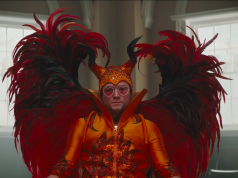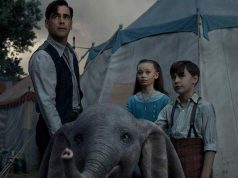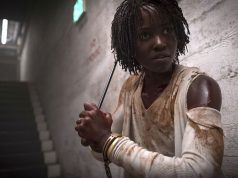I have no problem believing that the theme park John Hammond envisioned in the original “Jurassic Park” would eventually open despite what happened in “Jurassic Park.” Sure, you’d think they’d have learned their lesson — but no, actually, you wouldn’t think that. As a society, we don’t learn lessons very quickly, especially not when there’s profit to be made from not learning.
So I buy the existence of Jurassic World in “Jurassic World,” set on the same island near Costa Rica 22 years after the original events. (The sequels aren’t referenced, but they aren’t contradicted, either, as far as I can tell.) The theme park has been open for some time when we join the action, long enough for patrons to have become blasé. “No one’s impressed by a dinosaur anymore,” says park executive Claire (Bryce Dallas Howard). People want “bigger, louder, more teeth.”
This, of course, is an unsubtle reference to us, the audience, and our unending thirst for diversion. Sure, we were dazzled by Steven Spielberg’s dinosaurs back in 1993. But we’ve seen so much since then, so many computer-generated lizards and monsters and superheroes. It takes a lot more than a realistic-looking Tyrannosaurus rex to impress us these days.
What “Jurassic World” the movie and Jurassic World the theme park have done to re-arouse our interest is to create a new dinosaur, the Indominus rex, made from T. rex DNA and a secret, proprietary blend of other dinos’ genetic herbs and spices. It’s basically a T. rex with better arms, higher intelligence, and with other capabilities that emerge one by one. Every time it does something new, they go and tell the head scientist, Dr. Henry Wu (BD Wong), and he says, “Ah, that must be from the such-and-such DNA we used.” He’s always surprised and delighted to learn about the unforeseen results of his God-playing.
Don’t worry about the Indominus rex, though. It may be bigger, meaner, and smarter than a T. rex, but it’s safely locked in a paddock from which there is no way it could possibly esca–AW, SON OF A BEE! NOT AGAIN!
Our principal humans are the aforementioned Claire; her visiting nephews, Zach (Nick Robinson) and Gray (Ty Simpkins), about 16 and 12; and Owen (Chris Pratt), an ex-Navy man who now trains velociraptors, which it turns out is possible. These are the four people the movie is most concerned about, which means they are the four who are least likely to die. Everyone else is fair game. The body count is in the high teens, including one death that’s weirdly cruel and prolonged. Otherwise, though, it’s all fun and games.
Except that unlike the original film (and even its sequels), the characters here aren’t well developed or interesting. Chris Pratt is all action hero, very little personality: anyone could have given this performance. The screenplay (attributed to four people) defines Bryce Dallas Howard’s character too inconsistently. The boys are all right, but the subplot about their parents’ impending divorce feels laughably tacked on and unnecessary, like it was thrown in as a Spielberg homage or something.
Directed by indie up-and-comer Colin Trevorrow (“Safety Not Guaranteed”) in his first shot at the big-time, “Jurassic World” offers modest adventure, mid-level thrills, and sensibly paced action. In many ways, it’s exactly the kind of awesome-but-we’ve-seen-this-already spectacle that audiences (and park-goers) have gotten used to. There’s little magic in seeing people pretend to interact with yet another menagerie of CGI lizards, even when it’s competently put together. But still, let’s not kid ourselves. Dinosaurs on the loose will always be cool.
B- (2 hrs., 4 min.; )





